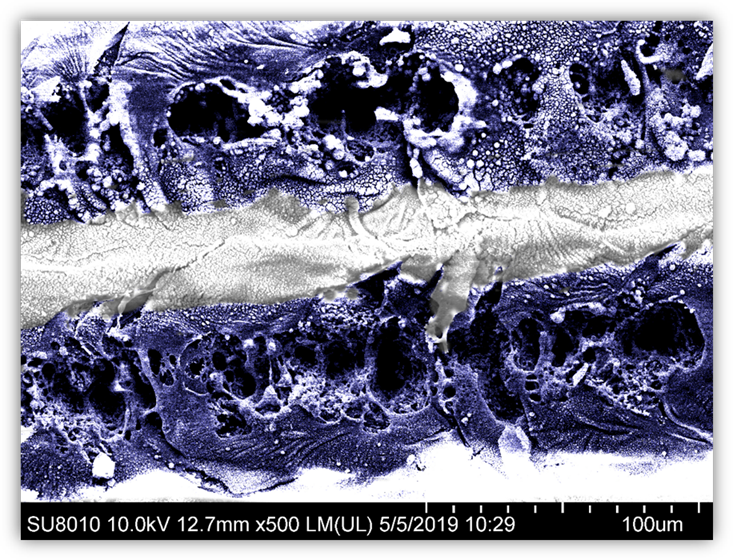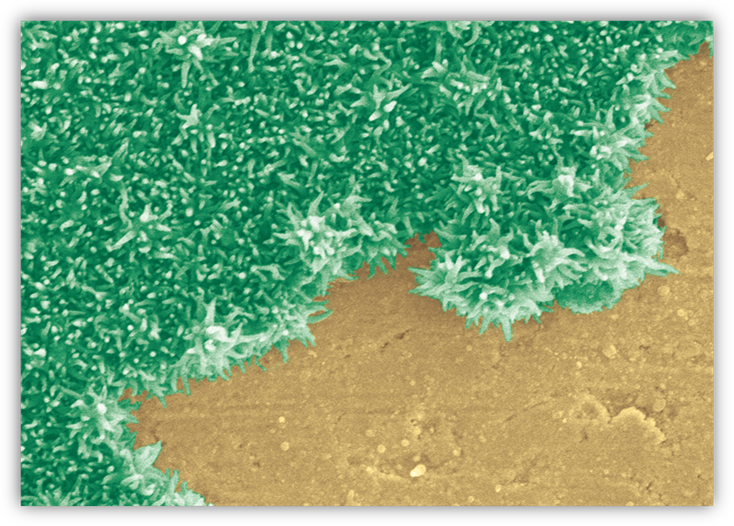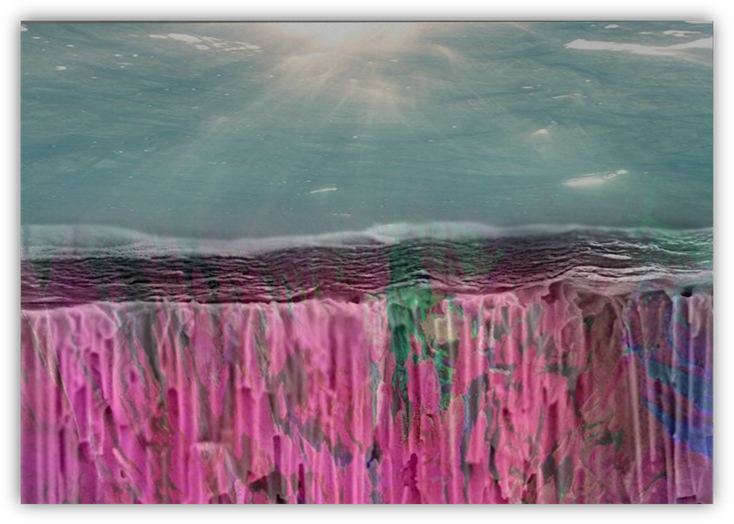The School of Materials Science and Engineering, ZJU has held a materials microstructure exploration contest since March of 2010. This contest follows the theme of exploring the microstructure of materials and uncovering sources of fascination. It encourages the students to innovatively express and reveal the fascinating world of materials microstructure using optical or electronic microscopes. This contest's goal is to improve the artistic tastes of any student majoring in science or engineering, including their art percipient, skills to express and ability to annotate the humanistic spirit, and enrich their humanistic connotations by the means of combining science with the arts while innovating fascinating works.
In 10th Microstructure Contest, many students beautify these microstructures of their materials into some kinds of water — lake, sea, ice, to name a few.

Ride the Wave – PDMS Breakdown Under Laser
by DAI Jiale
The PDMS substrate under the microscope is like waves rising and falling, one right after the other. The ship rides on the wind and breaks the waves, leaving a trail of courageous progress. In the pursuit of truth on the road of scientific research, we may meet some troubles, but we will go forward in spite of the hardships and will eventually reach the ideal shore.

Oasis – Carbon Nanofiber
by GAO Bing
In the vast desert, every trekking traveler is most eager for water. Even a small shovelful is enough to make their pace become more determined, not to mention an oasis like this. This lush oasis, like a mirage, can bring them, not only a few sips of painful drink, but also the hope to continue to move forward and out of the desert.

Subsea Abyss – Graphene Oxide Film Based on Al2O3 Film
by ZHOU Yu
The morphology of graphene oxide is a longitudinal stacking of thin layers, while the substrate alumina layer is relatively coarse and shows an overall elongated lateral arrangement with clearly visible boundaries.

Ice ballast – In-situ Nitrogen-doped Porous Carbon Negative Electrode Material
By YANG Tiantian
The mesh material appears brighter at the edges, like the way light shines on ice, and the three-dimensional mesh structure gives the image layers, like looking down into an ice cave and seeing intricate twig-shaped ice ballast.



